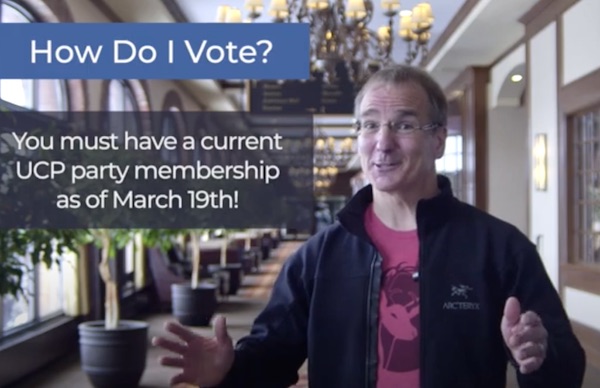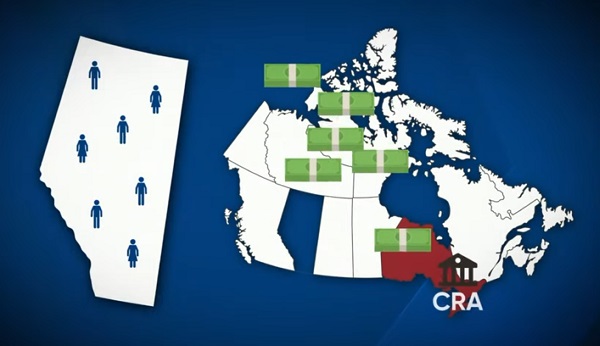Alberta
Red Deer South MLA Jason Stephan strongly urges Central Albertans to participate in the upcoming Leadership Review

Leadership Review of Jason Kenney in Red Deer
On Saturday, April 9, Alberta conservatives, of which there are many in Central Alberta, will have the opportunity to decide whether it is time to change the leader of the United Conservative Party. The vote will occur at the Cambridge Hotel in Red Deer.
What is the purpose of the leadership review?
Jason Kenney has been leader of the party for over 4 years, and to date, members have not yet had an opportunity to review his performance.
Several months ago, 22 local UCP constituency associations, passed resolutions requiring a review of the leader. Members have been waiting for a leadership review; it aligns with conservative principles of governance and accountability.
The United Conservative Party belongs to all Alberta conservatives, and it is the grassroots members who determine whether it is time to change our leader.
We have seen too much contention. It is not right to label men or women as “mainstream” or “extreme” depending on whether or not they want a change in leader. Our party has seen too much dividing, too much labelling, sometimes change is required to heal, to unite and move forward.
We will have a provincial election in the spring of 2023. Alberta is a conservative province, yet our party is not doing as well as it should in the polls.
We should always seek to put our best foot forward. This review will provide members of the party with the option to change the leader before the upcoming 2023 provincial election.
This is Your Time. You decide, not the leader, not the party.
Have you sometimes felt voiceless over the past two years? I understand that feeling. I have sometimes felt it myself. But this is your time. You can have a voice and it will be important. This is an opportunity for you to decide, not the leader, not the party.
Alberta conservatives will agree with many of policies of a conservative government. That is no surprise, conservative policies are very different from NDP policies. Conservative policies, regardless of the leader, increase economic prosperity and it is exciting to see this occurring.
But a leadership review is not about a comparison to the NDP. That will be the purpose of the election. Leadership reviews are about conservatives putting our best foot forward with the right leader for the right time.
All of us have strengths and weaknesses – some leaders are better suited for some times but not others. Sometimes a change in leader is simply a positive recognition of this truth.
How do I vote?
This is what you must do to vote. There are three steps.
First, if you need to, buy or renew your party membership by March 19. The cost of a membership is $10 for one year. If you have any doubts whether your membership is current, you may want to pay $10 to make sure.
If you need to, but do not buy or renew your party membership by March 19 you do not get to vote!
Party memberships can be purchased online at – www.unitedconservative.ca/take-action/membership
Second, register on-line to vote. If you do this prior to March 19, the cost is $99 if you are over 25. If you less than 26, the cost is $49 – so let’s involve our families and many young conservatives, giving them a unique opportunity to have a voice!
After March 19, unless the party extends early bird prices, on-line registration costs increase to $149.
Online registration is at – www.unitedconservative.ca/sgm-2022
Last step, come to our Cambridge Hotel on April 9, between noon and 6 PM and vote!
What happens if Alberta conservatives want to change in their leader?
If Alberta conservatives say it is time to change the leader, there will be a leadership race for a new leader.
To assume that any one person is the only person who would be a good leader for our party is a false assumption, disregarding the many wonderful men and women in our province.
Politics should not be a career. It is a special opportunity to serve and having contributed one’s unique experiences and talents for the public good, stepping aside and allowing others to do the same.
Great leaders lead in love and inspire the best in those they serve.
There are many honest and principled men and women with their own unique strengths and experiences to offer for this time, who could be great leaders of our party.
A massive vote that is a true representation of Alberta grassroots conservatives is the right outcome.
Your voice matters! This is an important opportunity, let your friends and family know, invite them to come and join you, to have fun together, to take action together, to have your say, and to be heard! Let’s do it! See you there!
Alberta
Temporary Alberta grid limit unlikely to dampen data centre investment, analyst says
From the Canadian Energy Centre
By Cody Ciona
‘Alberta has never seen this level and volume of load connection requests’
Billions of investment in new data centres is still expected in Alberta despite the province’s electric system operator placing a temporary limit on new large-load grid connections, said Carson Kearl, lead data centre analyst for Enverus Intelligence Research.
Kearl cited NVIDIA CEO Jensen Huang’s estimate from earlier this year that building a one-gigawatt data centre costs between US$60 billion and US$80 billion.
That implies the Alberta Electric System Operator (AESO)’s 1.2 gigawatt temporary limit would still allow for up to C$130 billion of investment.
“It’s got the potential to be extremely impactful to the Alberta power sector and economy,” Kearl said.
Importantly, data centre operators can potentially get around the temporary limit by ‘bringing their own power’ rather than drawing electricity from the existing grid.
In Alberta’s deregulated electricity market – the only one in Canada – large energy consumers like data centres can build the power supply they need by entering project agreements directly with electricity producers.
According to the AESO, there are 30 proposed data centre projects across the province.
The total requested power load for these projects is more than 16 gigawatts, roughly four gigawatts more than Alberta’s demand record in January 2024 during a severe cold snap.
For comparison, Edmonton’s load is around 1.4 gigawatts, the AESO said.
“Alberta has never seen this level and volume of load connection requests,” CEO Aaron Engen said in a statement.
“Because connecting all large loads seeking access would impair grid reliability, we established a limit that preserves system integrity while enabling timely data centre development in Alberta.”
As data centre projects come to the province, so do jobs and other economic benefits.
“You have all of the construction staff associated; electricians, engineers, plumbers, and HVAC people for all the cooling tech that are continuously working on a multi-year time horizon. In the construction phase there’s a lot of spend, and that is just generally good for the ecosystem,” said Kearl.
Investment in local power infrastructure also has long-term job implications for maintenance and upgrades, he said.
“Alberta is a really exciting place when it comes to building data centers,” said Beacon AI CEO Josh Schertzer on a recent ARC Energy Ideas podcast.
“It has really great access to natural gas, it does have some excess grid capacity that can be used in the short term, it’s got a great workforce, and it’s very business-friendly.”
The unaltered reproduction of this content is free of charge with attribution to the Canadian Energy Centre.
Alberta
Alberta Next: Taxation

A new video from the Alberta Next panel looks at whether Alberta should stop relying on Ottawa to collect our provincial income taxes. Quebec already does it, and Alberta already collects corporate taxes directly. Doing the same for personal income taxes could mean better tax policy, thousands of new jobs, and less federal interference. But it would take time, cost money, and require building new systems from the ground up.
-

 Fraser Institute1 day ago
Fraser Institute1 day agoBefore Trudeau average annual immigration was 617,800. Under Trudeau number skyrocketted to 1.4 million annually
-

 MAiD1 day ago
MAiD1 day agoCanada’s euthanasia regime is already killing the disabled. It’s about to get worse
-

 Frontier Centre for Public Policy1 day ago
Frontier Centre for Public Policy1 day agoNew Book Warns The Decline In Marriage Comes At A High Cost
-

 Business1 day ago
Business1 day agoPrime minister can make good on campaign promise by reforming Canada Health Act
-

 Addictions1 day ago
Addictions1 day ago‘Over and over until they die’: Drug crisis pushes first responders to the brink
-

 International1 day ago
International1 day agoChicago suburb purchases childhood home of Pope Leo XIV
-

 Daily Caller1 day ago
Daily Caller1 day agoUSAID Quietly Sent Thousands Of Viruses To Chinese Military-Linked Biolab
-

 Energy1 day ago
Energy1 day agoLNG Export Marks Beginning Of Canadian Energy Independence



